Are you looking for an entry-level job in education? If so, you’ll likely need a resume to help you stand out among other applicants. A teacher resume is a great way to highlight your skills and abilities and show hiring managers that you’re the right fit for their open positions. Unfortunately, competition for teaching assistant roles and ESL teacher jobs can be fierce. Still, by tailoring your resume specifically to these fields and following general tips from this guide, you can increase your chances of getting noticed. To begin your journey towards landing the perfect ESL teacher job or another educational role with an emphasis in English as a Second Language, we have compiled samples and expert advice to help you create an eye-catching resume that aligns with industry standards and demonstrates your value as an applicant. Read on to learn more about what makes a great resume, how to tailor it to specific roles, including the correct details without overloading it, and much more!
ESL Teacher Resume Example
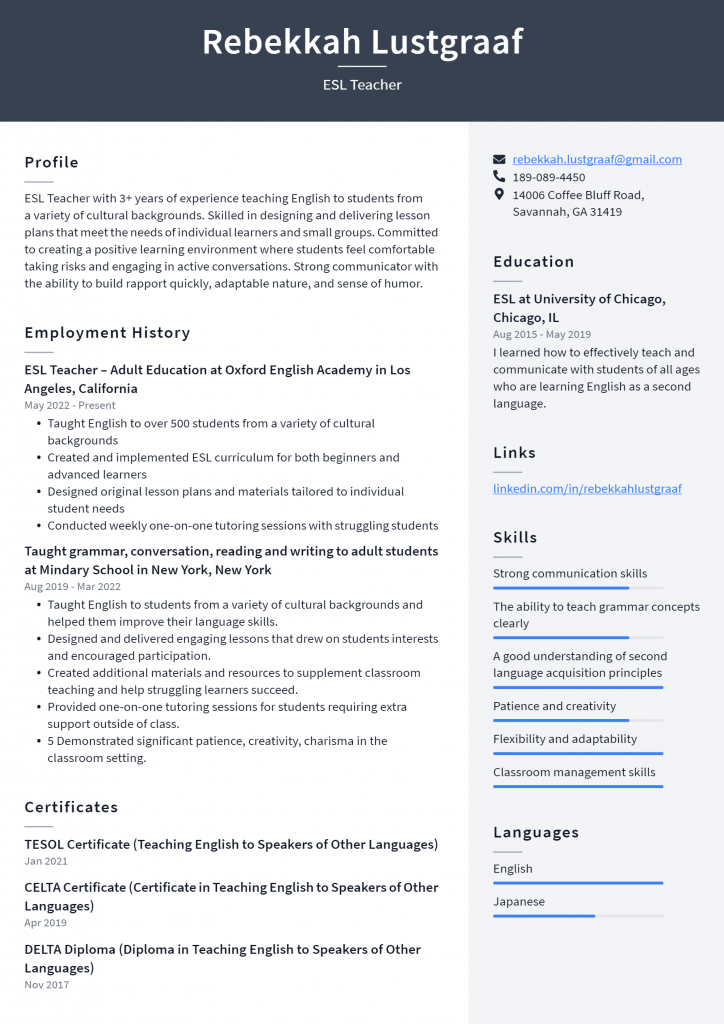
Download This ESL Teacher Resume as PDF
ESL Teacher – Elementary School Resume Example
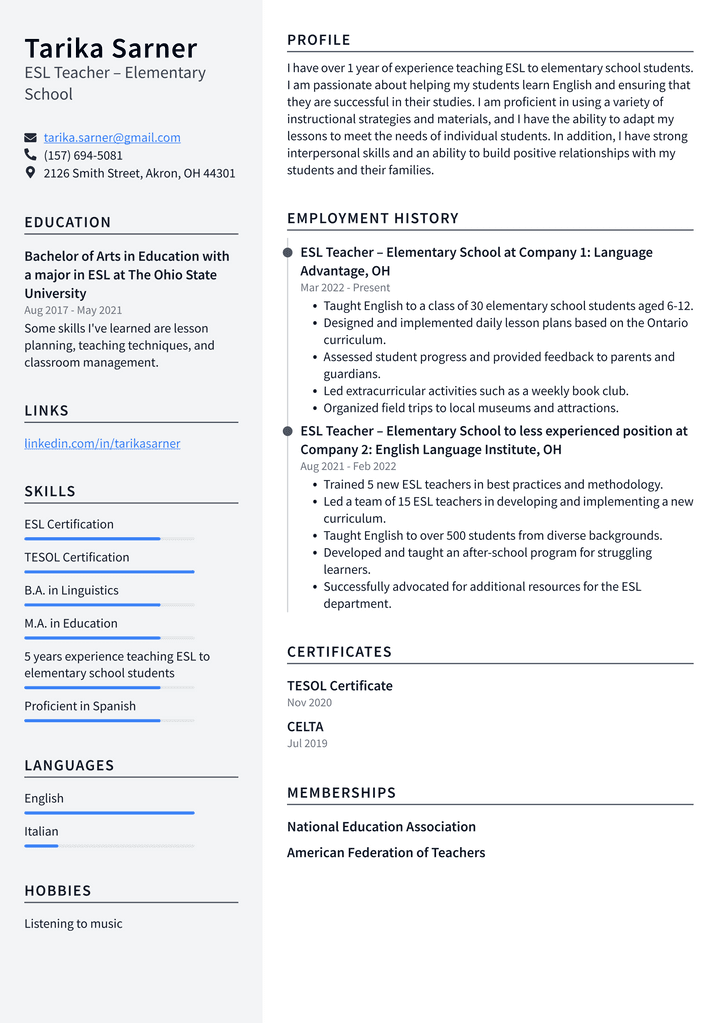
Download This ESL Teacher – Elementary School Resume as PDF
ESL Teacher – Middle School Resume Example
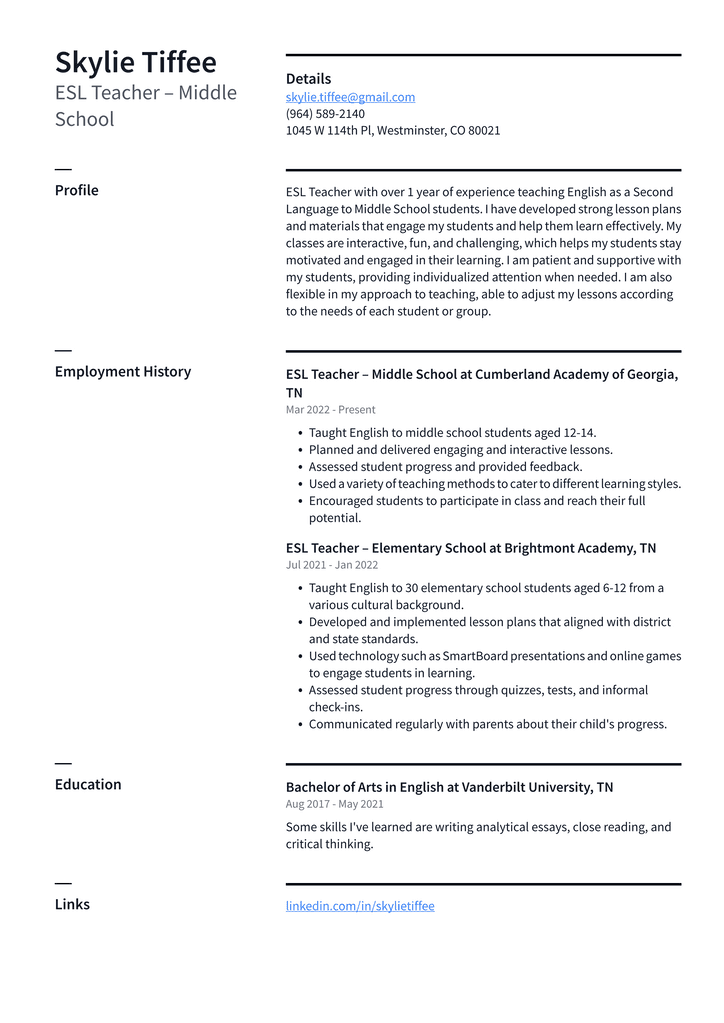
Download This ESL Teacher – Middle School Resume as PDF
ESL Teacher – University Resume Example

Download This ESL Teacher – University Resume as PDF
ESL Teacher – High School Resume Example
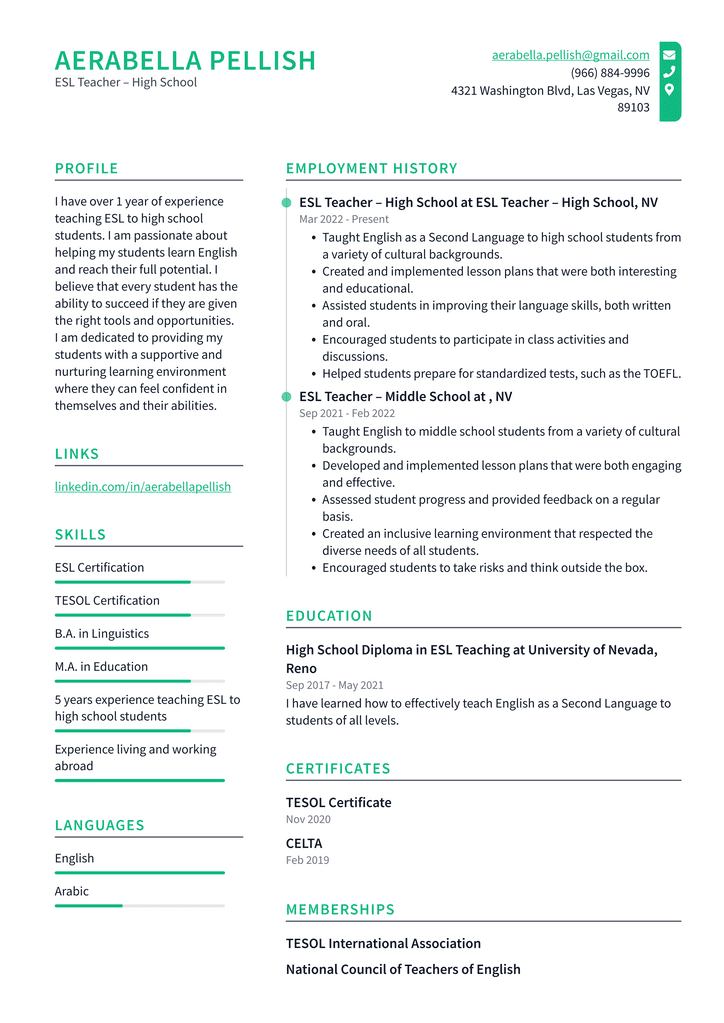
Download This ESL Teacher – High School Resume as PDF
ESL Teacher – Adult Education Resume Example
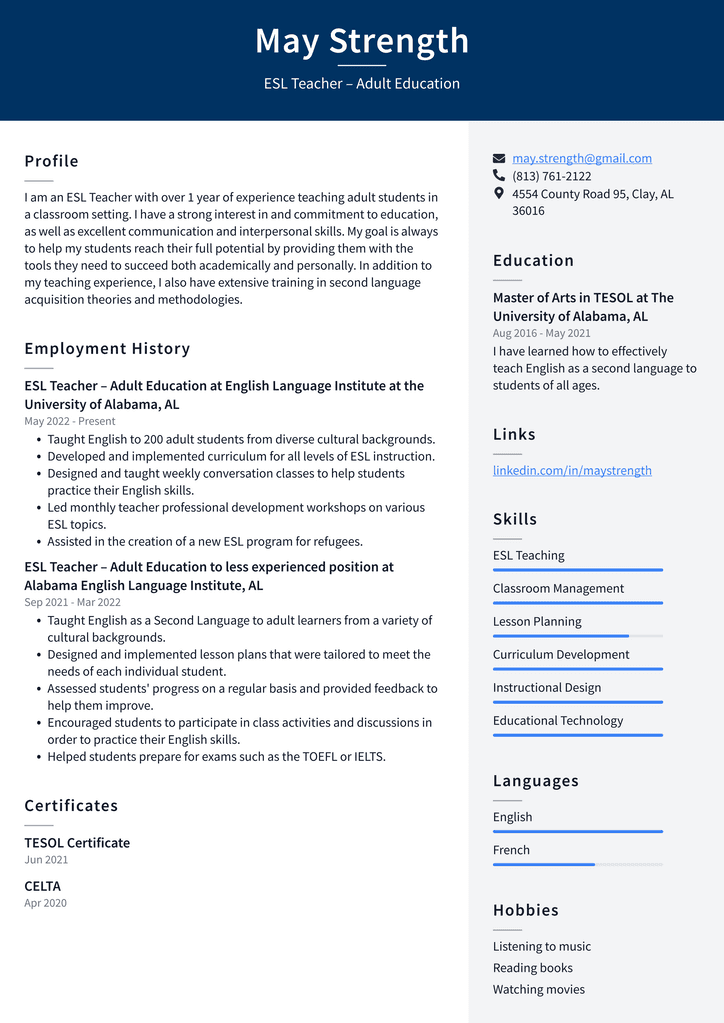
Download This ESL Teacher – Adult Education Resume as PDF
ESL Teacher – Community College Resume Example
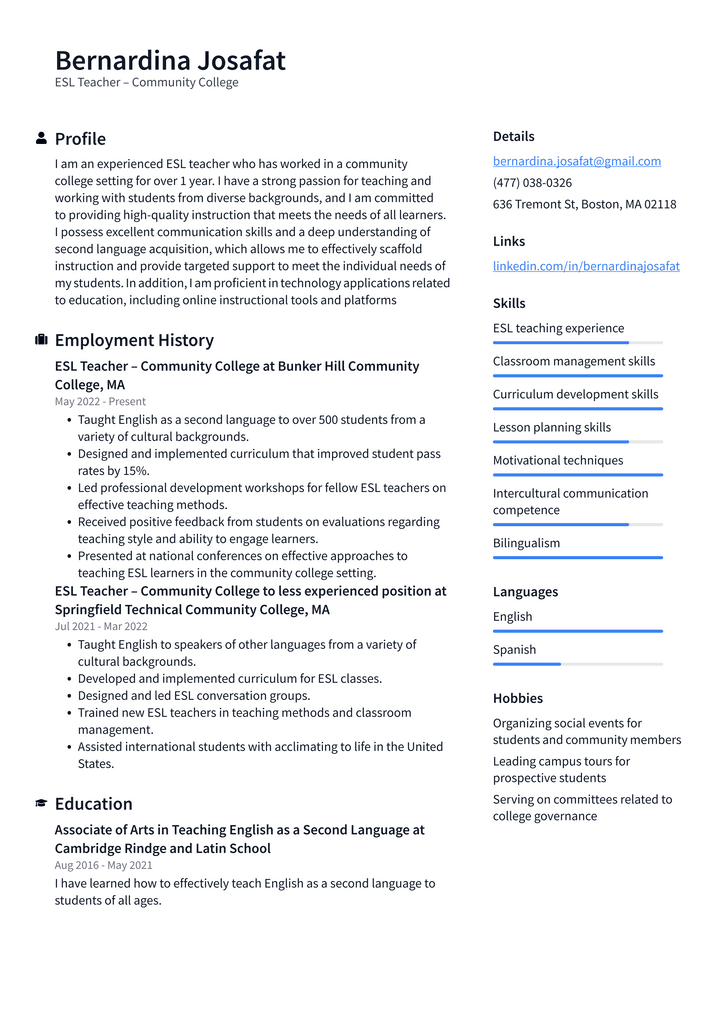
Download This ESL Teacher – Community College Resume as PDF
What Makes a Good ESL Teacher Resume?
The first step towards making a great ESL teacher resume is clearly understanding what makes a strong resume in the first place. To start, your resume should be legible, professional, and eye-catching. Aim to create a resume that is concise, clean, and well-organized. No one will want to spend time reading a page-long monologue about your life history or childhood ambitions. A well-organized resume will make it easier for hiring managers to quickly and efficiently process your information, allowing them to spend more time on each resume and less time trying to figure out what and where everything is. A professional-looking resume is also essential. Your resume is your first interaction with a potential employer, and a poorly designed resume is a great way to get your application thrown in the trash without a second thought.
Tackling the Basics
Before drafting your resume and tailoring it to specific positions and industries, it is essential to start with the basics. Your resume should be easy to read and follow a standard format that hiring managers have come to expect and appreciate. A traditional resume format will also make it easier for hiring managers to compare your information with others on their shortlists and make decisions based on clarity and ease of interpretation. You should include your name and contact details at the top of your resume, followed by your education history, work experience, and other relevant information, such as your interests. Depending on the position you are applying for, you may want to include additional details or sections, such as a list of references, teaching certifications, or contributions to relevant organizations or communities.
When Should You Include an ESL Certificate?
You need to decide whether or not to include your ESL certification on your resume. This is dependent on the position you are applying for. When applying for teaching positions, you will likely be asked to include your certificate and other relevant details, such as the number of hours you have been certified to teach and your state or organization of certification. When applying for teaching positions, you should include your ESL certification, as it shows hiring managers that you have the necessary skills to help students learn and improve their English language skills.
Including Language Skills on Your Resume
If you have worked as an ESL teacher or in another related profession, you may be asked to provide details on your language skills. You may also be required to list language skills on your resume if you are applying for a job that requires you to be proficient in a language other than English. When listing your language skills, make sure to list the languages you are fluent in, not just those you have studied in the past. Include details such as your level of proficiency, how long you have been fluent in the language, and other skills related to the language, such as reading and writing abilities. If you are applying for a position that requires you to be fluent in a language other than English, make sure to include your level of proficiency and any other skills related to that language. Being proficient in a language other than English can help you excel in various fields, including education, business, and more.
Including Teaching Experience on Your Resume
If you have any relevant experience teaching English, you should include it on your resume. This experience can make you stand out among other applicants and help you get your foot in the door for certain positions. A hiring manager will want to know what classes you have taught, your experience with those age groups or types of students, and any other relevant information. When including teaching experience on your resume, follow the same format used for the rest of your experience.
Wrapping Up
Now that you know what makes a good ESL teacher resume, it’s time to get to work! Start by reviewing sample ESL teacher resumes getting a general idea of what hiring managers are looking for and style. From there, you can roll up your sleeves and get to writing. You may have to tweak your resume a few times before it is ready for submission. Even if you have experience and a great resume, you will still face a competitive hiring process. However, with the proper outline, you can make your application stand out among others and get one step closer to landing the perfect job!